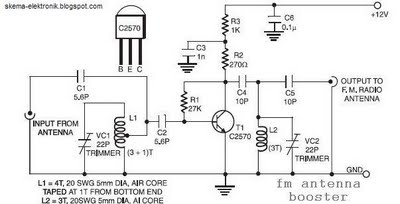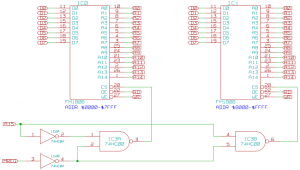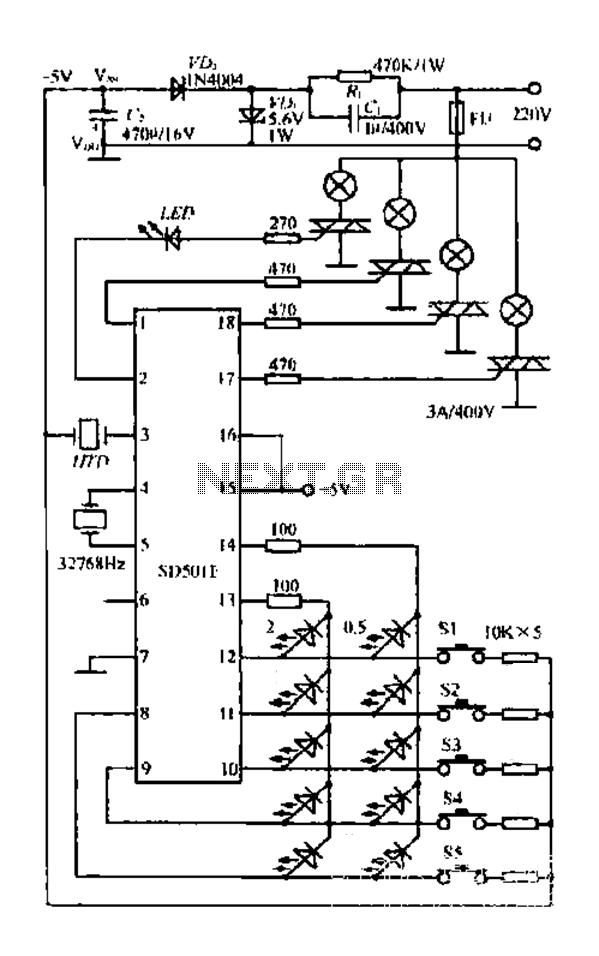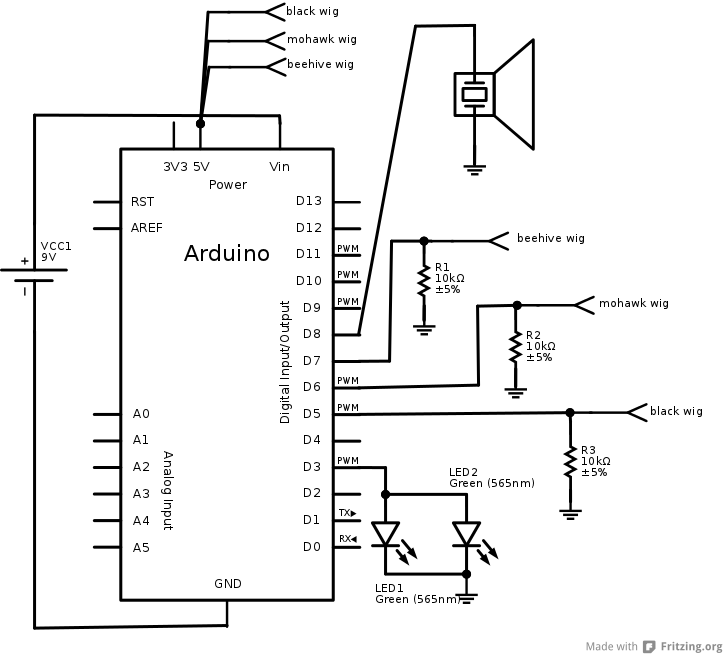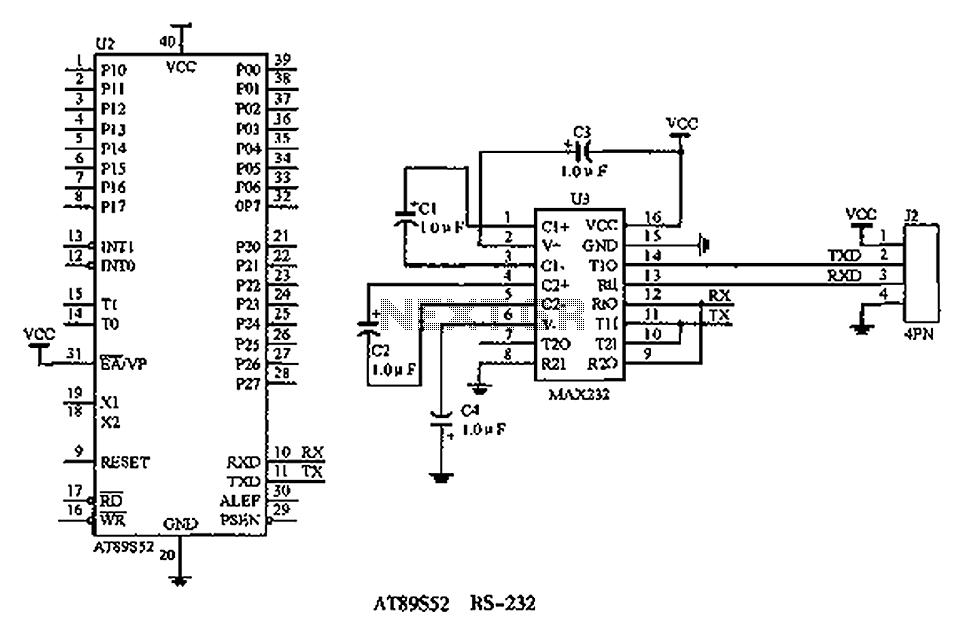
Timer circuit
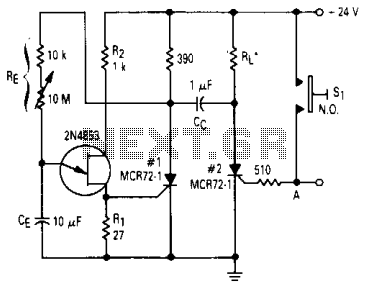
After one cycle of operation, SCR1 will be activated, resulting in a low voltage being applied to the UJT emitter circuit, which interrupts the tuning function. When pushbutton SI is pressed, or a positive pulse is applied at point A, SCR2 will turn on, and SCR1 will be turned off by the commutation of capacitor CC. With SCR1 off, the supply voltage will be applied to RE, and the circuit will begin timing again. After a period determined by the setting of RE, the UJT will fire, turning SCR1 on and commutating SCR2 off. The time delay is determined by the charge time of the capacitor.
The described circuit employs two Silicon Controlled Rectifiers (SCRs) and a Unijunction Transistor (UJT) for timing and control applications. The operation begins with SCR1 being triggered, which connects the UJT emitter circuit to a low voltage. This condition effectively halts any tuning function that may be in progress.
The circuit includes a pushbutton switch (SI) that functions as a manual reset or trigger mechanism. When SI is pressed, or when a positive pulse is applied to point A, SCR2 is activated. This action simultaneously turns off SCR1 through the commutation process facilitated by capacitor CC. As SCR1 turns off, the circuit re-establishes the supply voltage to the resistor RE, thus restarting the timing sequence.
The timing interval is governed by the charge time of capacitor CC, which is influenced by the resistance value of RE. As the capacitor charges, the UJT will eventually reach its firing threshold, at which point it will turn SCR1 back on and turn off SCR2. This cycle of operation can be repeated, allowing the circuit to function as a timer or oscillator depending on the configuration of the components involved.
In summary, this circuit provides a reliable method of timing control using SCRs and a UJT, with the timing duration adjustable via the resistor RE. The interaction between the SCRs and the capacitor is crucial for achieving the desired timing characteristics, making this circuit suitable for various timing applications in electronic systems.After one cycle of operation, SCR 1 will be on, and a low value of voltage is applied to the UJT emitter circuit, interrupting the tuning function. When pushbutton SI is pushed, or a positive going pulse is applied at point A, SCR 2 will turn on, and SCR 1 will be turned off by commutating capacitor CC.
With SCR 1 off, the supply voltage will be applied to RE and the circuit will begin timing again. After a period of time determined byihe setting of RE, the UJT will fire and turn SCR 1 on and commutate SCR 2 off. The time delay is determined by the charge time of the capacitor.
The described circuit employs two Silicon Controlled Rectifiers (SCRs) and a Unijunction Transistor (UJT) for timing and control applications. The operation begins with SCR1 being triggered, which connects the UJT emitter circuit to a low voltage. This condition effectively halts any tuning function that may be in progress.
The circuit includes a pushbutton switch (SI) that functions as a manual reset or trigger mechanism. When SI is pressed, or when a positive pulse is applied to point A, SCR2 is activated. This action simultaneously turns off SCR1 through the commutation process facilitated by capacitor CC. As SCR1 turns off, the circuit re-establishes the supply voltage to the resistor RE, thus restarting the timing sequence.
The timing interval is governed by the charge time of capacitor CC, which is influenced by the resistance value of RE. As the capacitor charges, the UJT will eventually reach its firing threshold, at which point it will turn SCR1 back on and turn off SCR2. This cycle of operation can be repeated, allowing the circuit to function as a timer or oscillator depending on the configuration of the components involved.
In summary, this circuit provides a reliable method of timing control using SCRs and a UJT, with the timing duration adjustable via the resistor RE. The interaction between the SCRs and the capacitor is crucial for achieving the desired timing characteristics, making this circuit suitable for various timing applications in electronic systems.After one cycle of operation, SCR 1 will be on, and a low value of voltage is applied to the UJT emitter circuit, interrupting the tuning function. When pushbutton SI is pushed, or a positive going pulse is applied at point A, SCR 2 will turn on, and SCR 1 will be turned off by commutating capacitor CC.
With SCR 1 off, the supply voltage will be applied to RE and the circuit will begin timing again. After a period of time determined byihe setting of RE, the UJT will fire and turn SCR 1 on and commutate SCR 2 off. The time delay is determined by the charge time of the capacitor.
